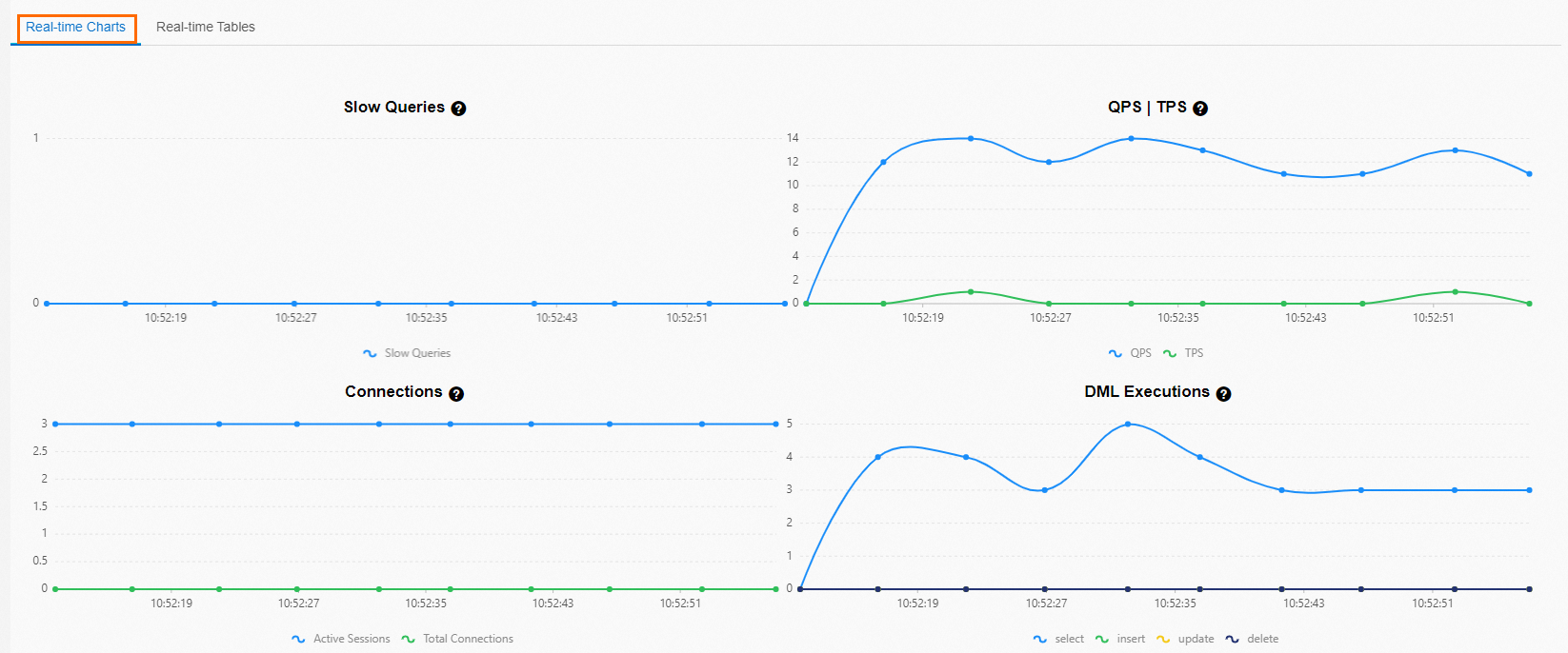If you want to continuously monitor the performance of an ApsaraDB RDS for MySQL instance, such as performance diagnosis and optimization on the RDS instance, you can use the real-time monitoring feature to view the performance metrics and the trend of the RDS instance in real time. This feature helps identify and handle potential performance issues on an RDS instance at the earliest opportunity.
Prerequisites
Your RDS instance runs one of the following MySQL versions and RDS editions:
MySQL 8.0 on RDS High-availability Edition, RDS Enterprise Edition, or RDS Cluster Edition
MySQL 5.7 on RDS High-availability Edition, RDS Enterprise Edition, or RDS Cluster Edition
MySQL 5.6 on RDS High-availability Edition
MySQL 5.5 on RDS High-availability Edition
Procedure
Go to the Instances page. In the top navigation bar, select the region in which the RDS instance resides. Then, find the RDS instance and click the ID of the instance.
In the left-side navigation pane, choose Autonomy Services > Diagnostics.
Click the Real-time Monitoring tab.
On the Real-time Monitoring page, view the real-time monitoring data of your RDS instance on the following tabs:
NoteYou can click Metric Description in the upper-left corner to view the description of each metric.
Real-time Charts: You can view the trend charts of metrics of the RDS instance in real time.

Real-time Tables: You can view the values of metrics of the RDS instance in real time.
Values of the performance metrics are automatically refreshed every 5 seconds.

References
FAQ
Troubleshoot slow SQL statements on an ApsaraDB RDS for MySQL instance
Troubleshoot memory consumption issues on an ApsaraDB RDS for MySQL instance
Troubleshoot insufficient storage issues on an ApsaraDB RDS for MySQL instance
Troubleshoot the issues that cause high I/O on an ApsaraDB RDS for MySQL instance
You can use the autonomy service-related features to perform performance diagnosis and optimization on your RDS instance. For more information, see Overview of DAS.